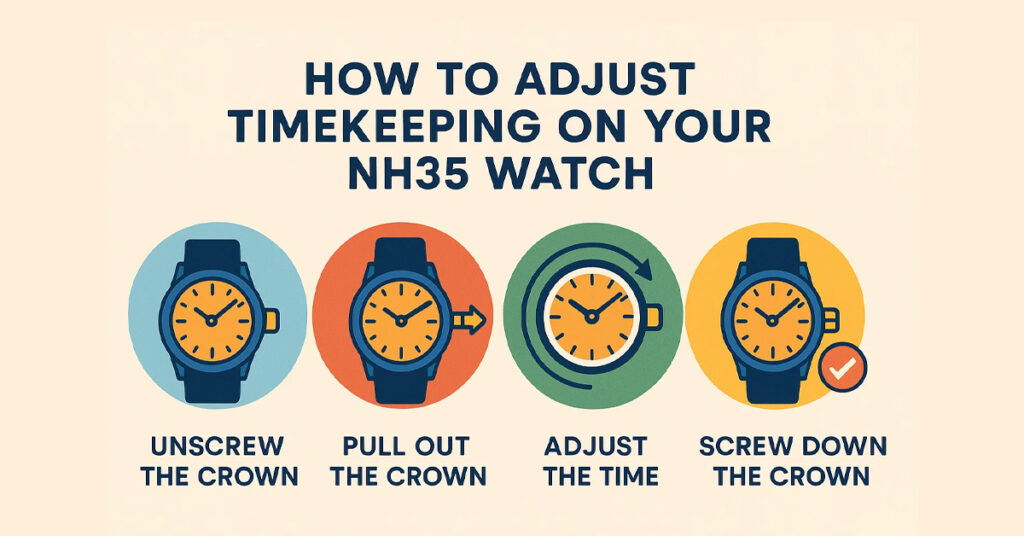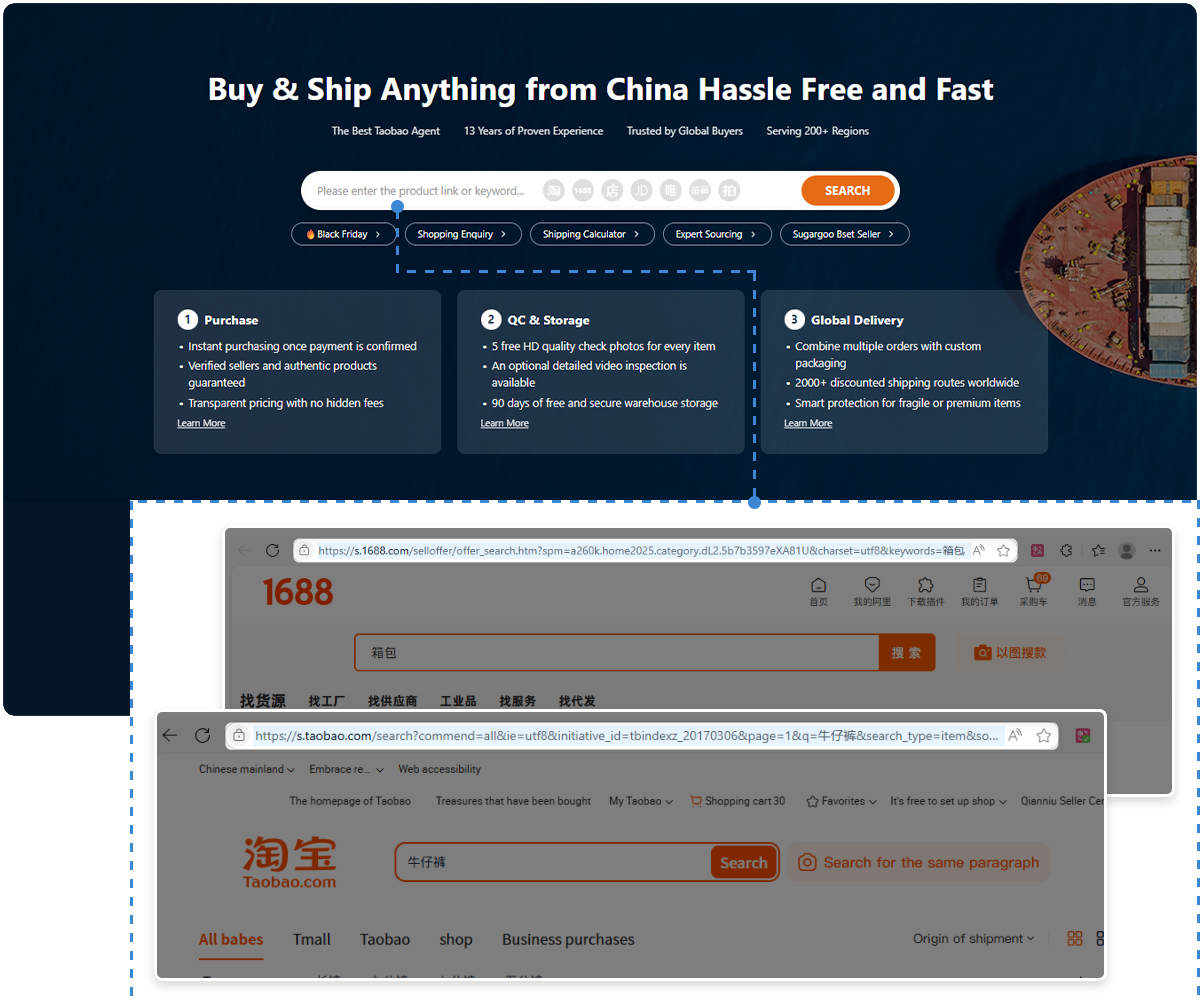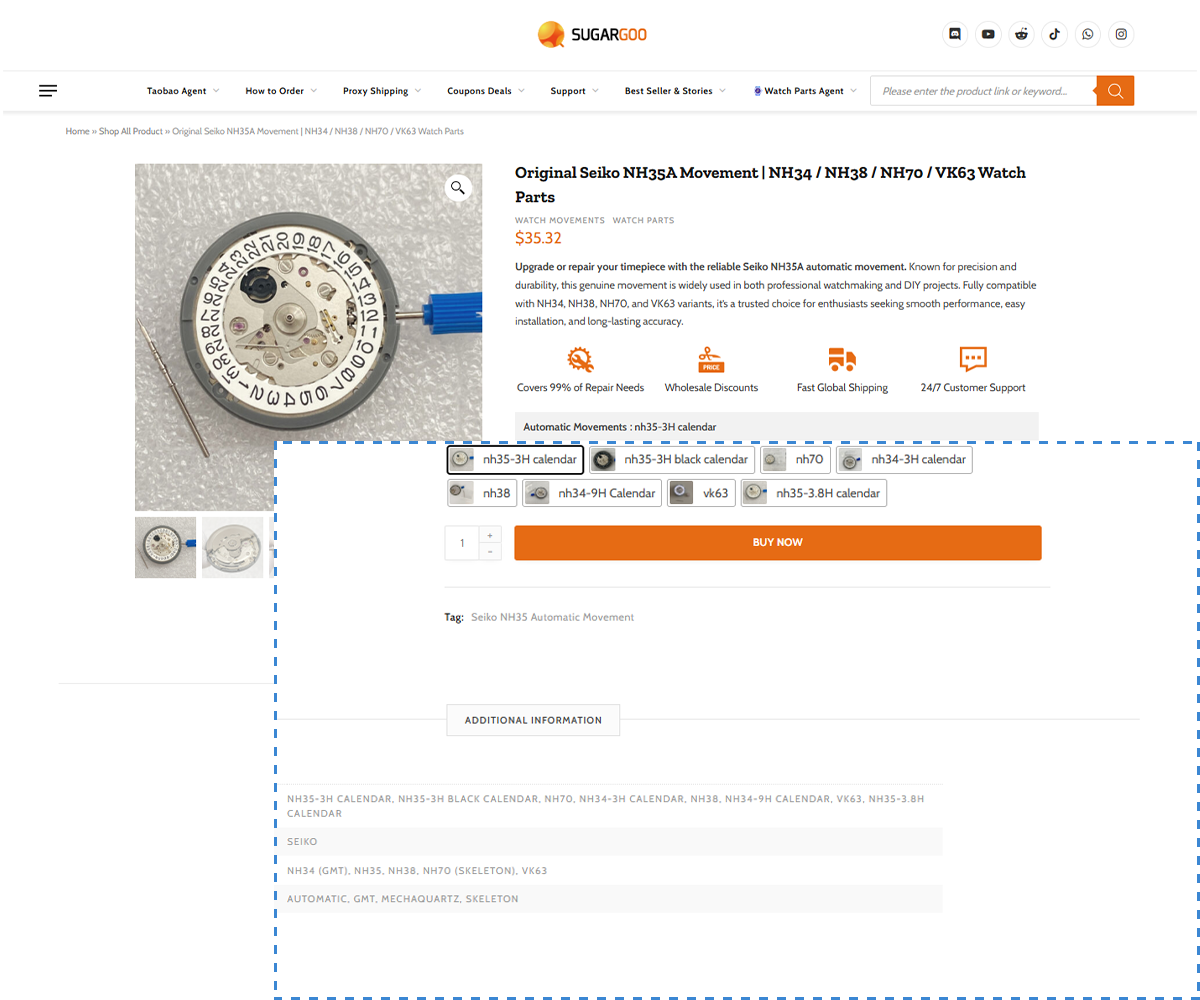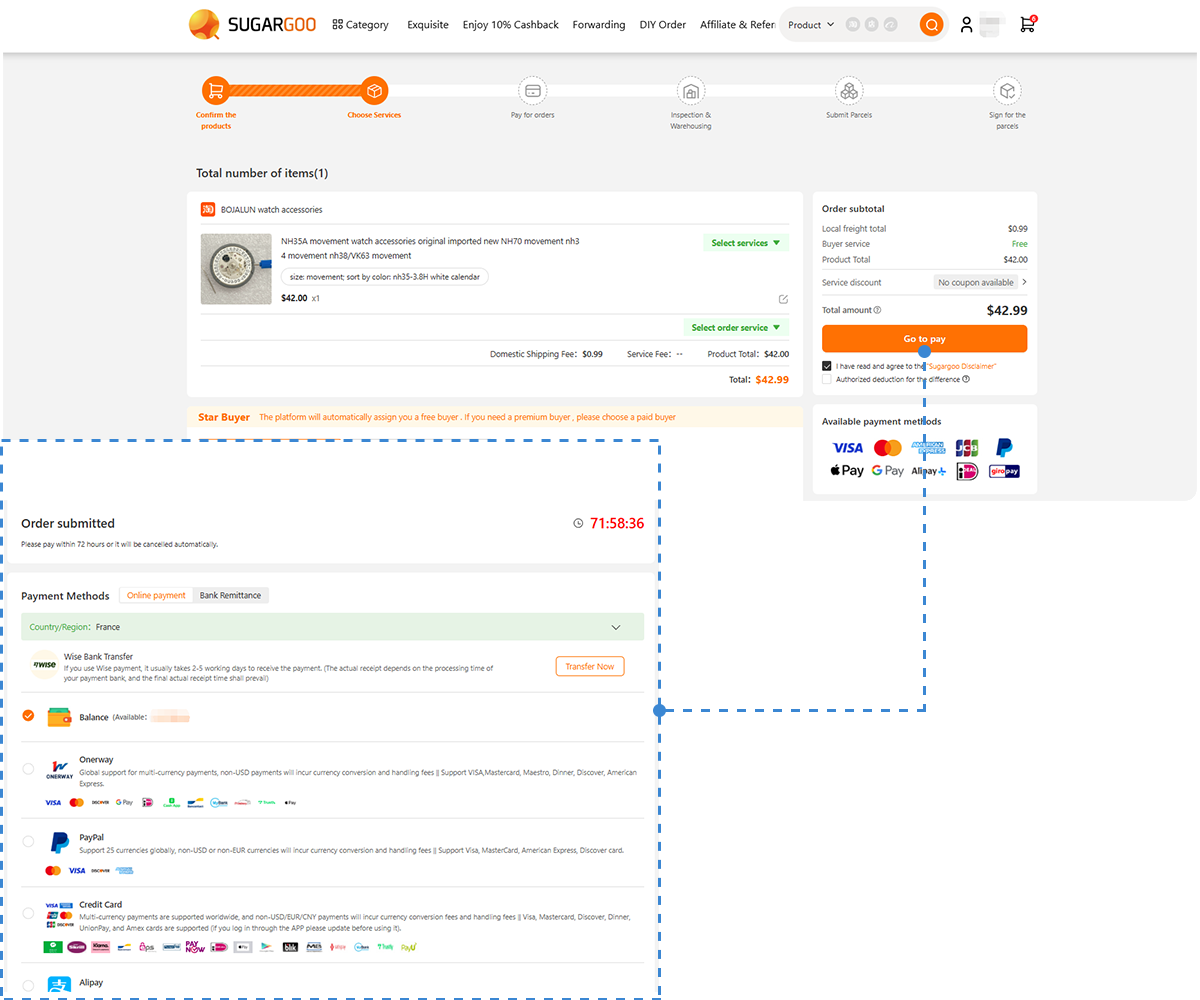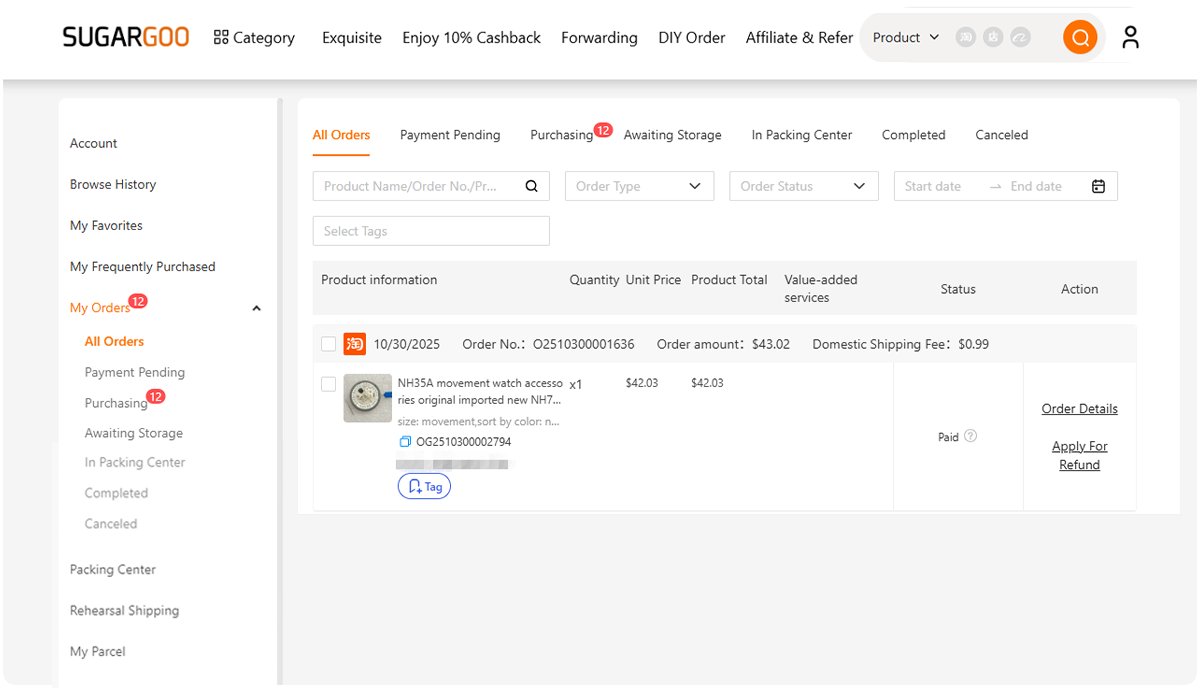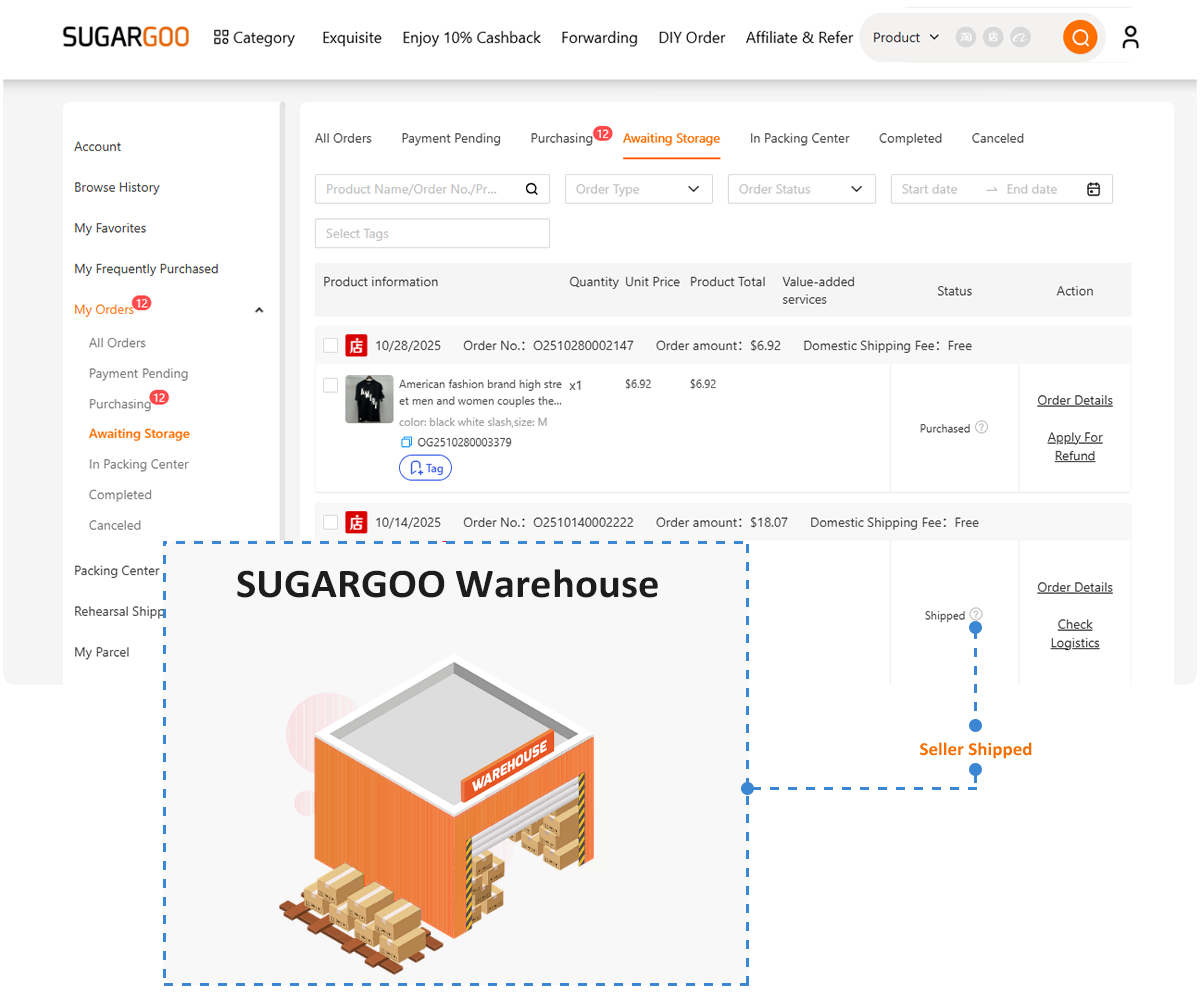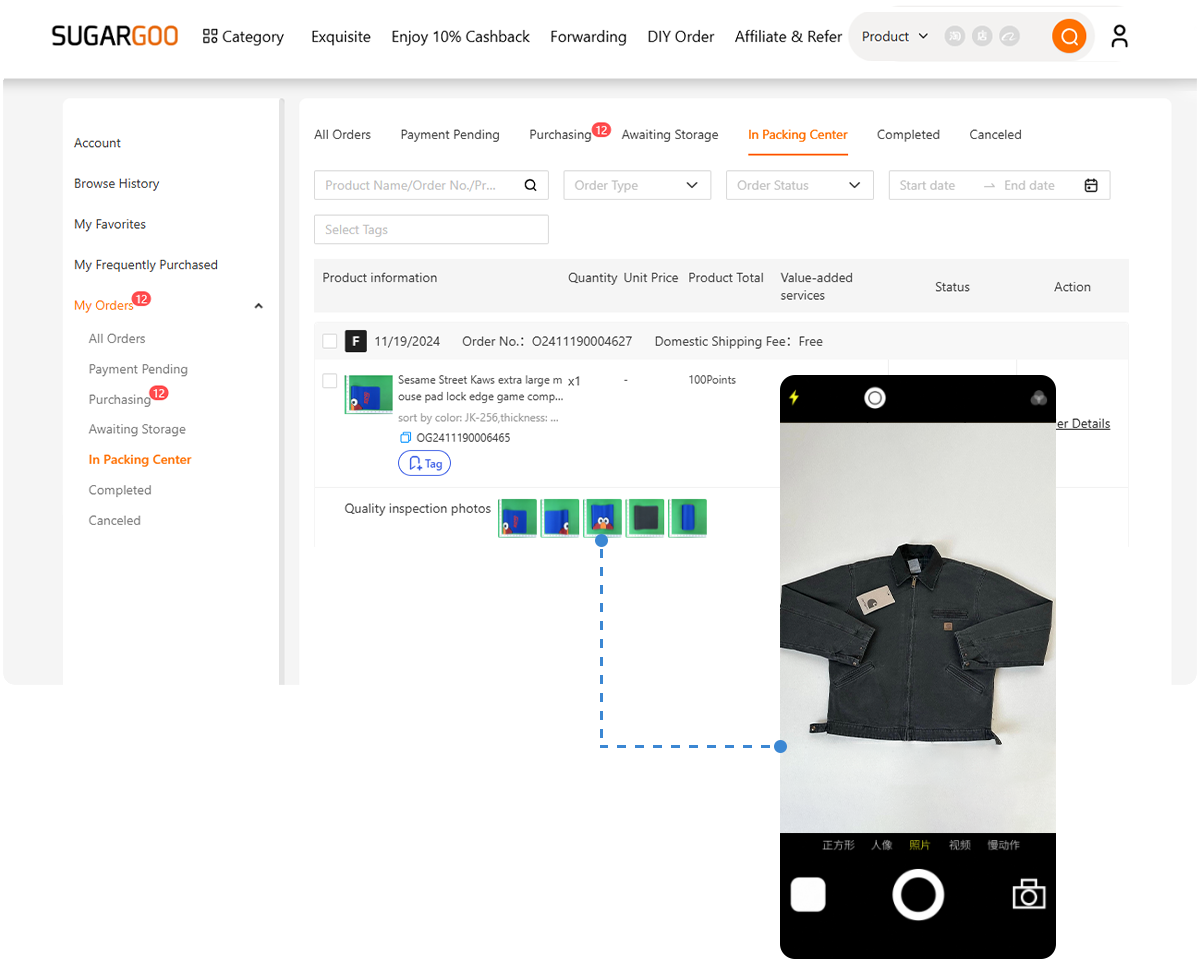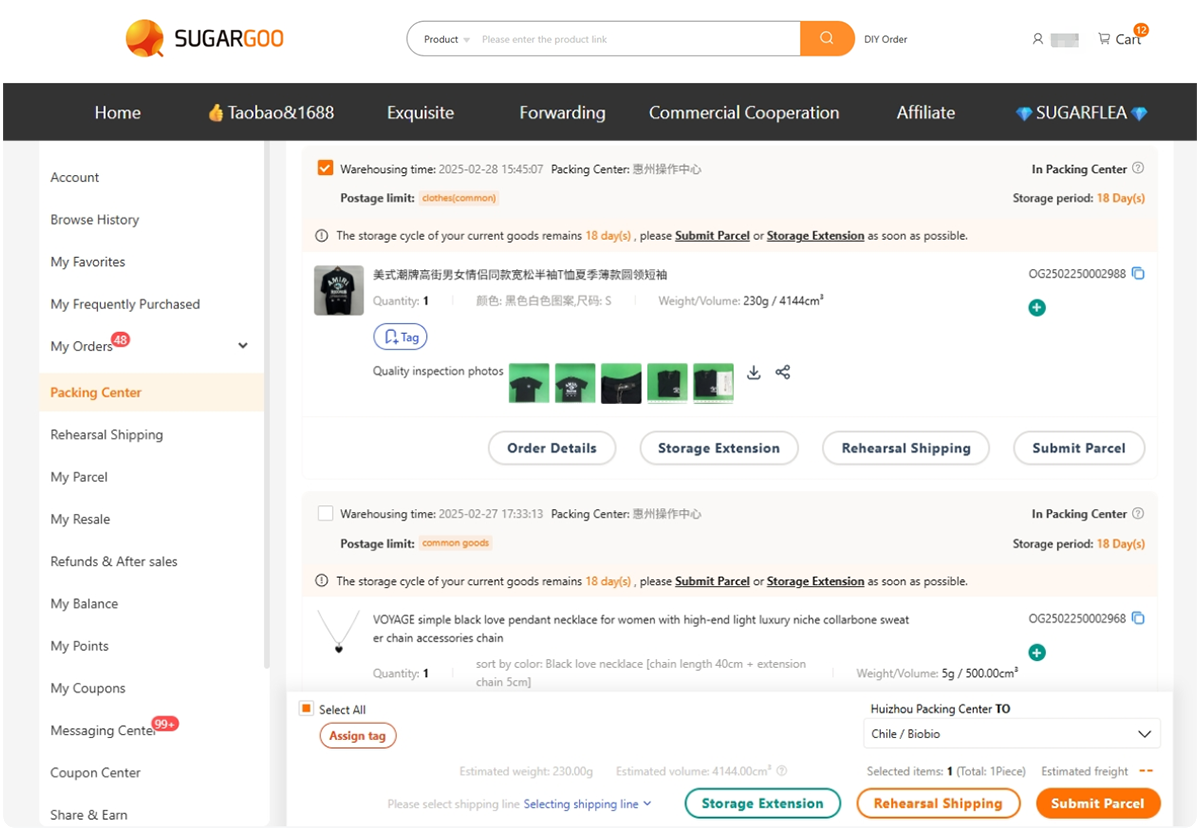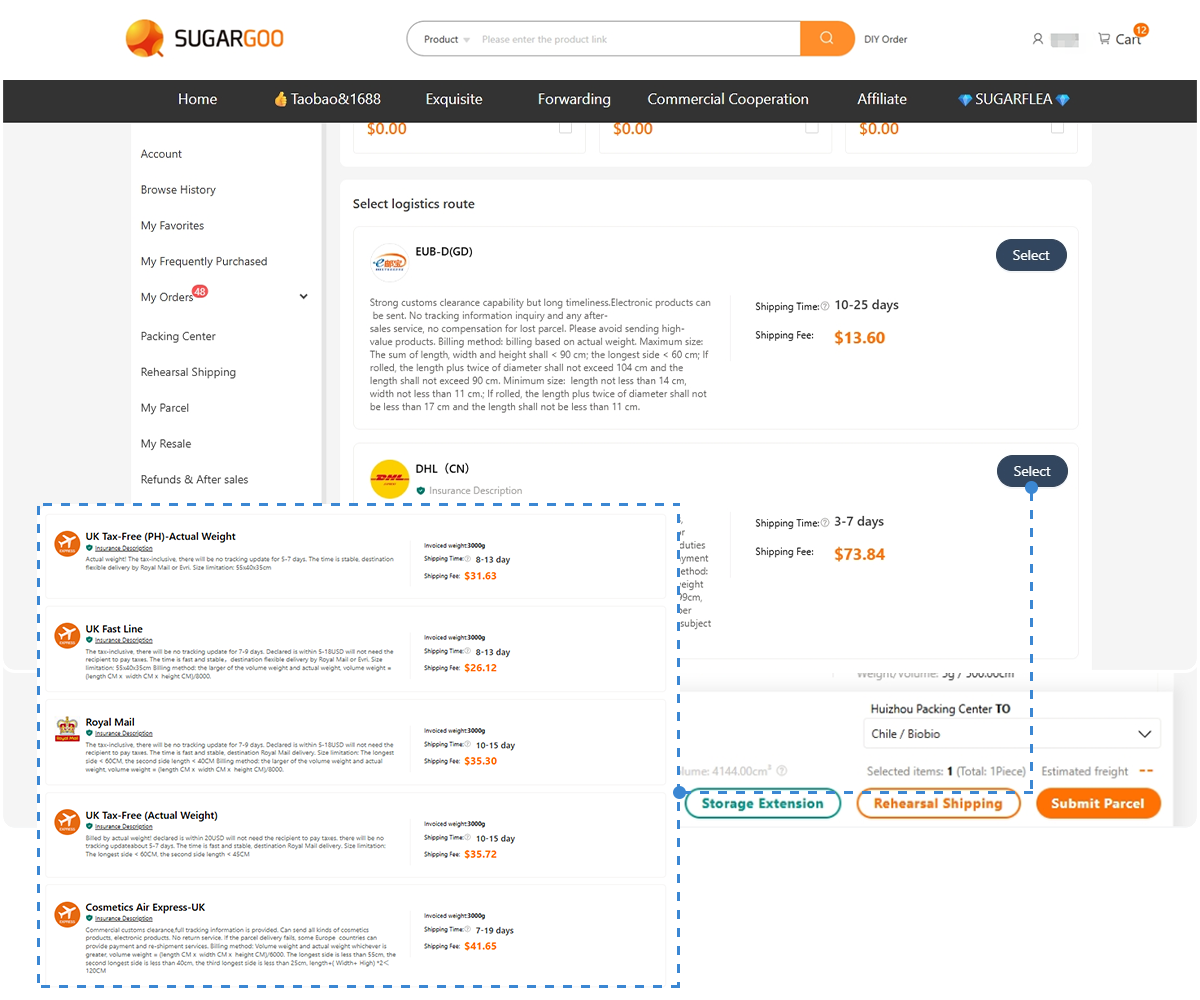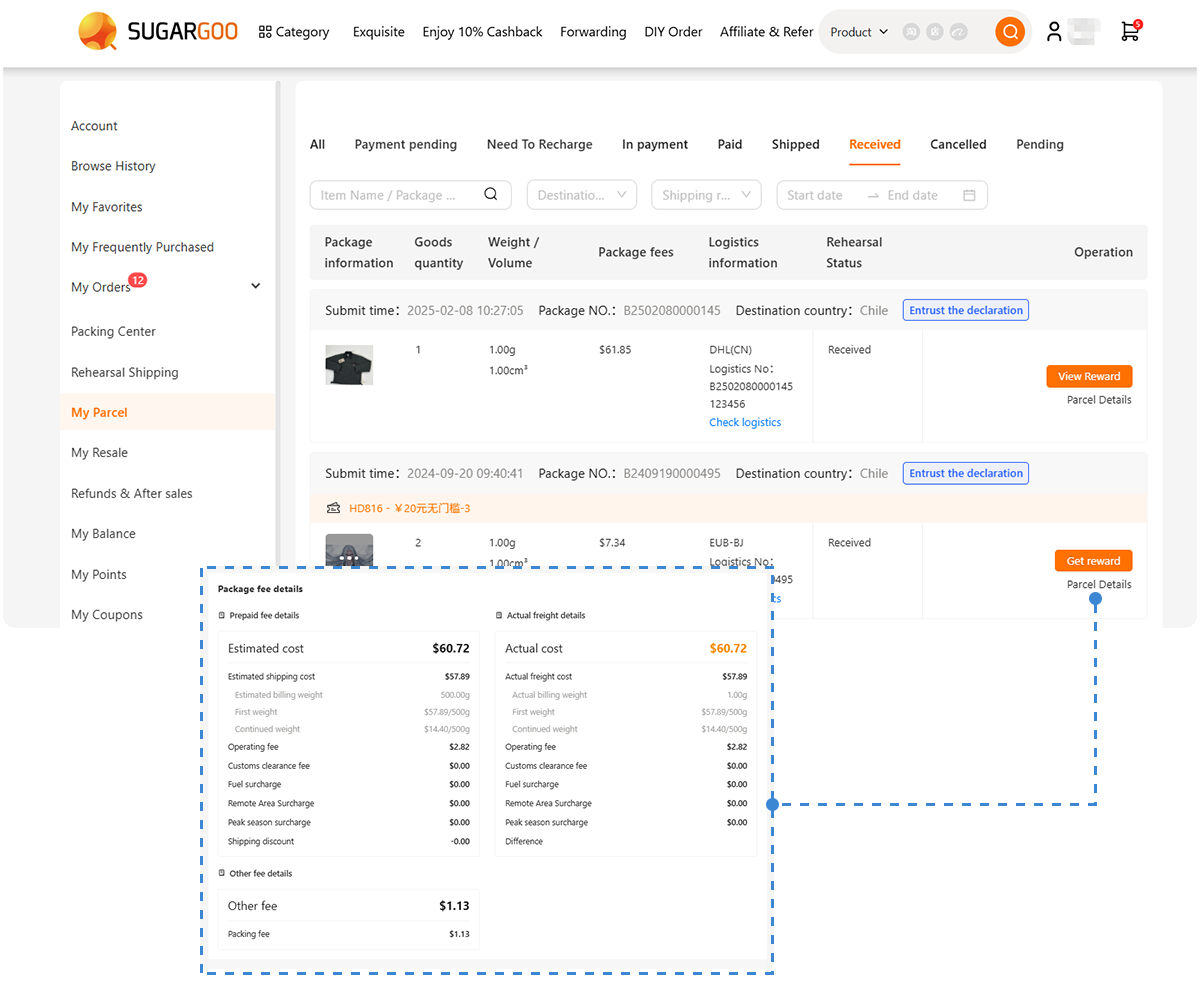The Seiko NH35 movement is famous for one thing — it just works. Durable, affordable, easy to service — it’s the go-to heart for hundreds of custom builds and microbrand watches.
But even the most reliable automatic movement needs fine-tuning sometimes. Maybe your NH35 runs a few seconds fast each day, or maybe it’s losing time overnight. Either way, it’s not broken — it just needs a little regulation.
In this guide, you’ll learn exactly how to adjust the timekeeping on your NH35 movement safely, accurately, and confidently — whether you’re using a professional timegrapher or just your phone’s stopwatch.
1. Before You Touch Anything: Understand What Regulation Means
Regulation isn’t repair. You’re not changing parts or fixing broken gears — you’re simply adjusting how fast or slow your movement runs.
Inside every automatic watch, the balance wheel swings back and forth, controlled by a hairspring. If that hairspring’s effective length changes slightly (even by fractions of a millimeter), your watch speeds up or slows down.
That’s where the regulator lever comes in — a tiny arm that lets you make microscopic adjustments.
Think of it like tuning a guitar string:
- Tighten = runs faster
- Loosen = runs slower
2. How Accurate Should Your NH35 Be?
From the factory, Seiko NH35 movements are rated at:
- Accuracy: -20 to +40 seconds per day
- Power Reserve: ~41 hours
- Beat Rate: 21,600 bph (6 beats per second)
That means a small deviation is perfectly normal.
However, most modders and collectors aim for tighter accuracy, usually between -5 and +10 seconds per day, depending on position and wear habits.
Your goal is stability — not perfection. Even luxury movements drift a bit differently depending on temperature, gravity, and how you store the watch overnight.
3. Tools You’ll Need for Safe Adjustment
You don’t need a lab. Just the right setup and a steady hand.
🧰 Basic Toolkit
- Case back opener (to access the movement)
- Case holder (to secure the watch)
- Loupe or magnifier (10x preferred)
- Fine-tip plastic or brass stick (for moving the regulator)
- Dust blower (keep the movement clean)
- Timegrapher (or phone app like Watch Accuracy Meter)
All of these are available from Sugargoo’s Watch Repair Tools collection — tested by real modders.
⚠️ Important Warnings Before You Start:
- Never touch the balance wheel directly.
- Avoid metal screwdrivers — they can magnetize parts.
- Keep the area dust-free.
- If your watch is still under warranty, open at your own risk.
Regulating a watch isn’t hard, but it is delicate. You’re working with movements finer than a human hair.
4. Step-by-Step: How to Regulate an NH35 Movement
Step 1: Open the Case Back
Place your watch securely in a case holder. Use a wrench-type case opener to carefully unscrew the back.
If your NH35 build has a display back (transparent crystal), this step is easier — but still, go slow.
For reference, see How to Use a Watch Case Opener Without Scratching if you’re unsure.
Step 2: Identify the Regulator
Once open, you’ll see the balance wheel — a golden spinning wheel oscillating rapidly.
Just beside it, two small levers:
- One marked “+” and “–” → This is your rate regulator (controls speed).
- One shorter lever → Beat adjustment (don’t touch this unless advanced).
Important: Move only the rate regulator, never the beat corrector unless you have a timegrapher and advanced experience.
Step 3: Measure the Current Accuracy
You can’t fix what you can’t measure.
Option 1: Using a Timegrapher
Place the watch flat on the sensor and let it run for 30–60 seconds. You’ll see:
- Rate: How fast or slow it runs (in seconds/day)
- Amplitude: Power of the balance wheel swing
- Beat Error: Balance symmetry
Record the reading. Example: +15 sec/day.
Option 2: Using a Smartphone App
If you don’t own a timegrapher, apps like Watch Accuracy Meter can measure beat and rate using your phone’s mic. Not as precise, but close enough for hobbyists.
Step 4: Adjust the Regulator
Using your plastic stick or brass oiler, gently nudge the regulator lever:
- Move toward “–” to slow down
- Move toward “+” to speed up
Each micro-movement equals roughly 2–4 seconds/day. Make adjustments tiny — think fractions of a millimeter.
After each move, close the case lightly (or cover with a dust cap) and re-test accuracy.
Repeat until you reach your target range.
Step 5: Test Across Positions
A watch behaves differently on the wrist, dial-up, dial-down, or crown-up. To fine-tune:
- Test flat (dial up)
- Test crown up (simulate wrist)
- Average results
If it gains a few seconds on wrist but loses on desk, that’s fine — real-life accuracy matters more than bench accuracy.
5. Understanding Beat Error (Advanced Tip)
While not essential for casual users, advanced modders sometimes fine-tune beat error — the symmetry of the balance wheel swing.
If your timegrapher shows “BE 0.8 ms” or higher, it means the wheel isn’t centered perfectly. Adjusting this requires shifting the beat lever (the smaller arm beside the regulator).
⚠️ Warning: This step is risky without experience. It’s easy to overcorrect or destabilize amplitude.
Unless you’re confident, leave this to professionals or study NH35 beat error correction tutorials on dedicated forums before attempting.
6. The Role of Amplitude — Health Check of Your Movement
Regulation only works if your movement is healthy.
Amplitude shows the strength of the balance wheel’s swing:
- 270°–310°: Excellent
- 230°–260°: Normal
- Below 200°: Service recommended
Low amplitude can result from:
- Old or dry oil
- Dust inside the movement
- Magnetic interference
- Weak mainspring
If your watch still runs erratically after regulation, it might need cleaning, oiling, or demagnetizing.
You can find watch oils and lubricants and cleaning tools at Sugargoo for DIY servicing.
7. Common Mistakes When Regulating an NH35
| Mistake | Why It Happens | How to Avoid |
|---|---|---|
| Moving the wrong lever | Confusing beat lever and regulator | Double-check “+” and “–” marks before touching |
| Over-adjusting | Moving too far at once | Use minimal micro nudges, re-test often |
| Using metal tools | Magnetizes hairspring | Always use non-magnetic sticks |
| Testing too soon | Not letting it settle | Wait at least 1–2 hours between tests |
| Ignoring positional variance | Only testing flat | Test in multiple positions |
These errors are common even among experienced modders. Precision always wins over speed.
8. Real-World Expectations
Even after perfect regulation, your NH35 won’t behave like a quartz. Temperature, wear, and age affect timing daily.
Here’s a realistic benchmark:
| Type of Use | Acceptable Accuracy |
|---|---|
| Daily Wear | -5 to +10 sec/day |
| Stationary Display | -10 to +20 sec/day |
| Heavy Activity | -15 to +25 sec/day |
If you keep it within these ranges, your movement is running beautifully.
9. When to Stop Adjusting
If your watch keeps losing 30+ seconds per day even after multiple tweaks, something else is wrong — usually magnetism or dried oils.
In that case, use a demagnetizer tool, or check for contamination inside the movement.
Sugargoo’s watch maintenance accessories include demagnetizers and cleaning kits suitable for NH35 and ETA movements alike.
10. For Modders: How Regulation Affects Custom Builds
When building a custom Seiko mod, especially with aftermarket dials, hands, or sapphire crystals, you’re changing the internal balance slightly. Even case thickness and dial weight can affect how a movement behaves.
That’s why every mod build should be re-tested and re-regulated after final assembly.
If your NH35 mod gains 10 sec/day after casing, don’t panic — just adjust again after 48 hours of wear.
You can also read How to Choose the Right Seiko NH35 Movement for Your Build for insights on compatibility and quality levels between NH35 and NH36 units.
11. Storage Tips for Accurate Timekeeping
A regulated movement can still drift if stored incorrectly.
Follow these habits to maintain precision:
- Store dial-up at night for minimal deviation.
- Keep away from speakers, phones, and magnetic clasps.
- Wind fully before setting down — low tension causes slow runs.
- Avoid sudden temperature changes.
You’ll be surprised how much these little factors add up over weeks.
12. Where to Source Reliable NH35 Parts and Tools
Not all parts are created equal — and regulation only works if your movement and tools are genuine.
That’s why Seiko modders around the world trust Sugargoo, the verified Taobao agent for watch parts and accessories.
Here’s what makes it popular among builders:
- Direct access to NH35 movements and parts
- Quality control photos before shipping
- Order combination and repacking for cheaper freight
- One-stop source for dials, crowns, cases, and hands
You can also browse watch movement parts and watch accessories for complete assembly kits.
13. Final Thoughts: Patience Is Precision
Adjusting your NH35 isn’t about perfection — it’s about connection. You’re not fixing a machine; you’re learning its rhythm.
Every lever you move, every tick you listen to, brings you closer to the heartbeat of your craft. And once you feel that rhythm — once your watch runs steady because of your touch — you’ll understand why watchmaking is as much meditation as mechanics.
So don’t rush. Go slow, breathe steady, listen carefully.
Because sometimes, the best timekeeper isn’t the one that’s most accurate — it’s the one you tuned yourself.
